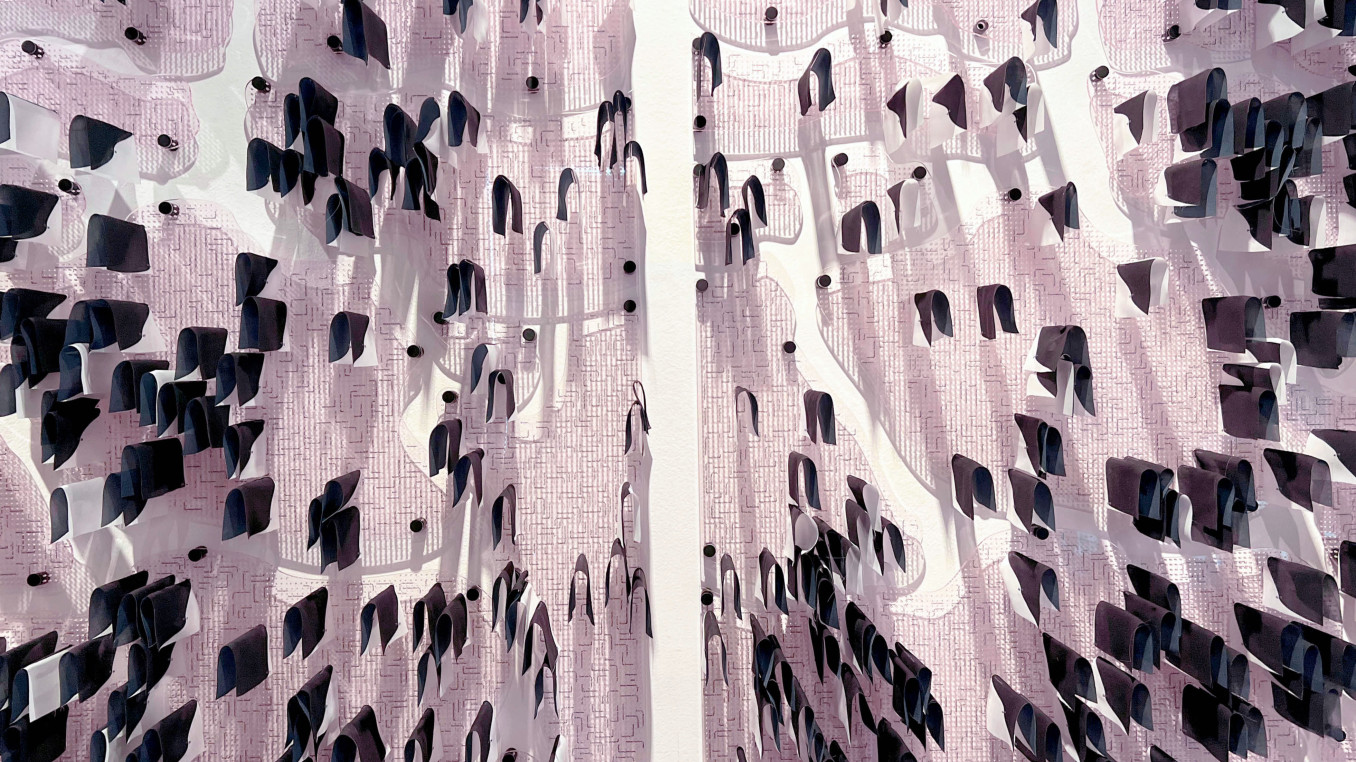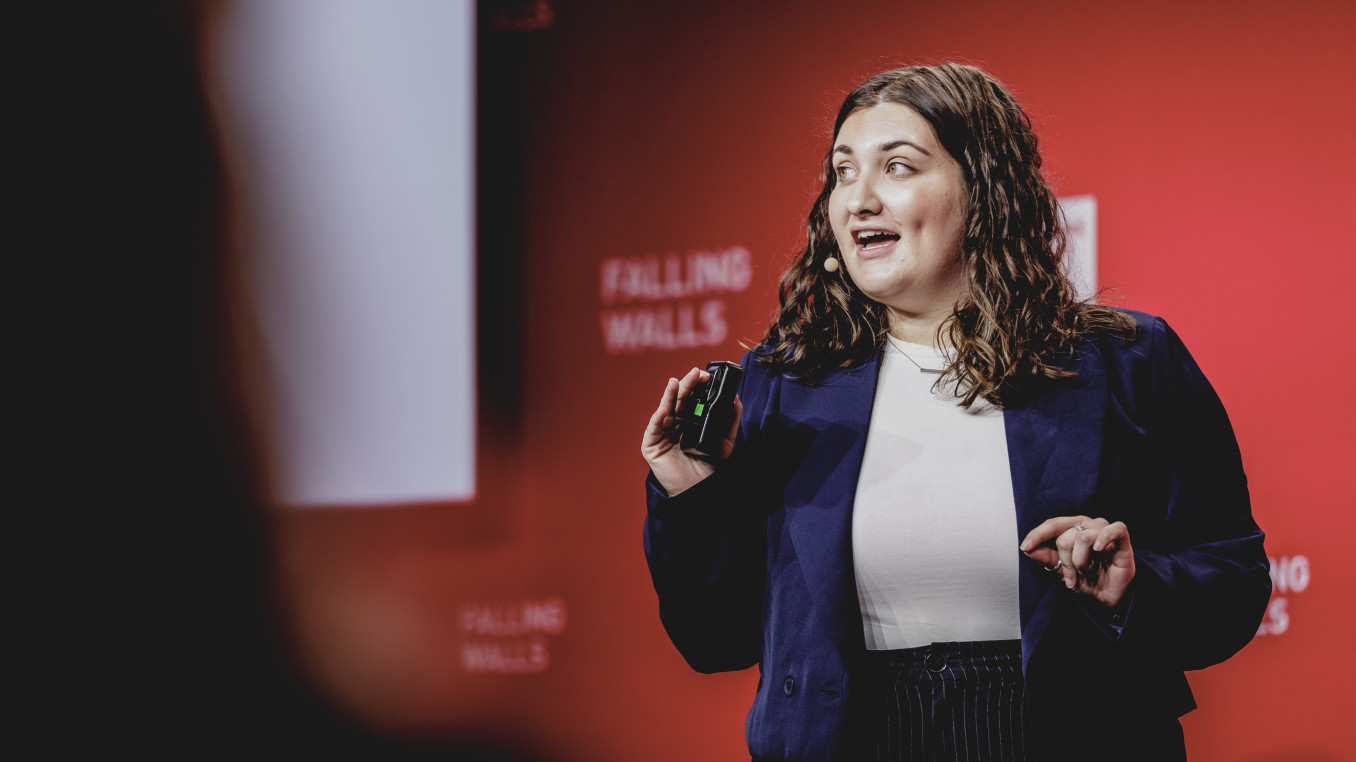Breaking the Wall of Microbial Prophecy
Breaking the Wall of Microbial Prophecy
Global Call 2025 Finalist Interview: Art & Science
Carla Alcalà Badias (Tàrrega, 1997) is an industrial designer and design researcher with a particular interest in material research, object design and contemporary craft practices. Through new materialisms, her work imagines possible futures for vernacular knowledge. Her practice spans a wide range of disciplines, combining commercial collaborations with her own initiatives. She is currently pursuing a doctoral research project on black ceramics at the Universitat Politècnica de València. In 2024, she received the Bio Art and Design Award, through which she developed an exhibition project for Sensing Otherness at MU Hybrid Art House. Between 2022 and 2023, she completed a research residency at Medialab Matadero, and in 2023 she was an artist-in-residence at Domaine de Boisbuchet, supported by AC/E Cultura. Her projects have been exhibited at international events such as Dutch Design Week, Lisbon Design Week and Valencia Design Fest.
Which wall does your research or project break?
Microbial Prophetesses seeks to break down the wall that separates scientific research from speculative design and storytelling. Traditionally, electroactive bacteria have been approached strictly within the fields of microbiology and environmental engineering. This project repositions them not only as scientific tools but as cultural agents—mythological, ancient beings capable of conveying more-than-human narratives about planetary health and ecological interdependence. By integrating art, design and microbial electrochemistry, this research breaks disciplinary silos and proposes new frameworks for understanding microbial life, one that includes intuition, ritual and imagination as valid forms of knowledge production.
Another limitation this project addresses is the underexplored potential of black ceramics as both a culturally significant and scientifically functional material. Most microbial electrochemical technologies rely on synthetic or high-impact conductive substrates. Black ceramic, rooted in vernacular craft and low-tech production, presents a sustainable alternative that can be locally sourced and adapted. This dual approach, honouring traditional material practices while advancing scientific exploration, reveals new opportunities for accessible, low-impact environmental sensing.
Finally, Microbial Prophetesses resists the dominant narratives of ecological doom. Instead of framing climate change solely in terms of catastrophe, it highlights the regenerative capacities of microorganisms, offering a more hopeful vision rooted in cooperation and resilience. In doing so, the project invites a shift in perspective: from extractive anthropocentric thinking toward a more-than-human ethics of care.
What is the main goal of your research or project?
The main goal of Microbial Prophetesses is to reimagine how we relate to microorganisms, particularly electroactive bacteria, through an artistic-scientific lens that emphasises both their environmental functions and their cultural-symbolic potential. By translating microbial activity into sensory experiences and ritual objects, the project aims to foster new forms of ecological awareness that connect ancient mythologies with cutting-edge microbiological research.
Scientifically, the project seeks to explore how black ceramics can be repurposed as electroconductive materials in microbial electrochemical technologies (METs). These ceramics support the growth of electroactive bacteria, enabling the development of low-cost, biodegradable biosensors capable of monitoring marine sediment health and biodegrading pollutants. In this way, the project proposes alternative applications of METs that are more attuned to circular and regenerative design principles.
Culturally, Microbial Prophetesses works to reframe the image of the microbe. Rather than associating bacteria solely with disease or decay, it casts them as ancient prophets of environmental change. Inspired by the figure of the Sibyl of Delphi, the project turns electroactive bacteria into mythological storytellers, singing not of the apocalypse but of ecological cycles and resilience.
Ultimately, the project aims to bridge gaps: between art and science, past and future, craft and technology, and humans and microbial life. It advocates for hybrid forms of knowledge that can inspire both scientific inquiry and poetic reflection on our planetary responsibilities.
What advice would you give to young scientists or students interested in pursuing a career in research, or to your younger self starting in science?
To young scientists, artists or transdisciplinary practitioners entering research: don’t be afraid to blur boundaries. The most compelling discoveries often happen at the intersection of disciplines, where curiosity overrides convention. If you're drawn to multiple fields, follow that instinct. Research is not only about answering questions, but about reframing what questions are worth asking.
To my younger self, I’d say 'trust that your intuitions matter'. Academia and science can feel rigid, especially when your work doesn’t fit neatly into predefined categories. But creativity, storytelling and intuition are not secondary to science: they are essential tools for navigating complexity, especially in a world facing climate breakdown, technological acceleration and ecological collapse. You don’t need to choose between rigor and imagination.
Also, value collaboration. Whether you work in a lab, in a studio or on a field site, research is never a solitary act. Learn from others across disciplines, listen deeply and cultivate relationships that nourish both your mind and your practice. Some of the most transformative moments come from unexpected conversations or shared moments of experimentation.
Lastly, embrace failure as part of the process. Research is iterative, messy and nonlinear. Some of the most powerful insights come not from what goes right, but from what goes unpredictably wrong. Stay open, stay generous and always keep asking: what other worlds are possible and how can I help create them?

